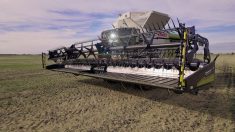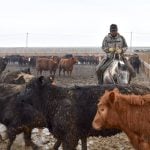The headline of an article released by FCC near the end of September was a little worrying: “What does a new high in farm debt mean for the ag sector?” Between 2016 and 2017, total Canadian farm debt increased by 6.6 per cent to more than $100 billion. In Manitoba, Saskatchewan and Alberta, the increase in farm debt between 2016 and 2017 was 4.8, 5.1 and 8.6 per cent, respectively.
That sounds rather alarming, and it looks alarming when you put it into a chart, but FCC has good news too. Asset values are also increasing, so our debt-to-asset ratio is actually decreasing. (For example, if you owned one asset, say a car worth $20,000, and you still had $5,000 to pay on that car, your debt-to-asset ratio would be 25 per cent. If your car fell in value to $10,000, your debt-to-asset ratio would increase to 50 per cent. That would be bad. But if you also paid off half of your loan and had only $2,500 outstanding, your debt-to-asset ratio would hold steady at 25 per cent).

The chart shows the debt-to-asset ratios (see below) for the Prairie provinces over the past five years. While overall, the Canadian ratios fell from 2016 to 2017, Alberta’s actually rose, from 12.7 to 12.9 per cent. Although, FCC is quick to point out that Alberta’s ratio is still below its 10-year average.
The debt-to-asset ratio for Manitoba sticks out like a sore thumb as compared to Alberta and Saskatchewan. Why is it so much higher? In a report from last fall, FCC pointed out that provinces with the highest share of crop farming had the lowest debt-to-asset ratios. If you are “only” growing grain, you’re not carrying debt for intensive equipment on your books. That FCC report also pointed out that provinces with “a high concentration of supply managed industries show a higher level of assets financed by debt.”

As the Bank of Canada raises interest rates, the “interest expense” line item of our balance sheets is going to grow. FCC economist Amy Carduner believes we can weather that storm. In a September 25 article, she wrote, “Current interest rates, while increasing, are still low enough to produce a relatively weak impact on ag’s overall financial health.” That will ring true for farmers who took out their first loan at double-digit interest rates!















